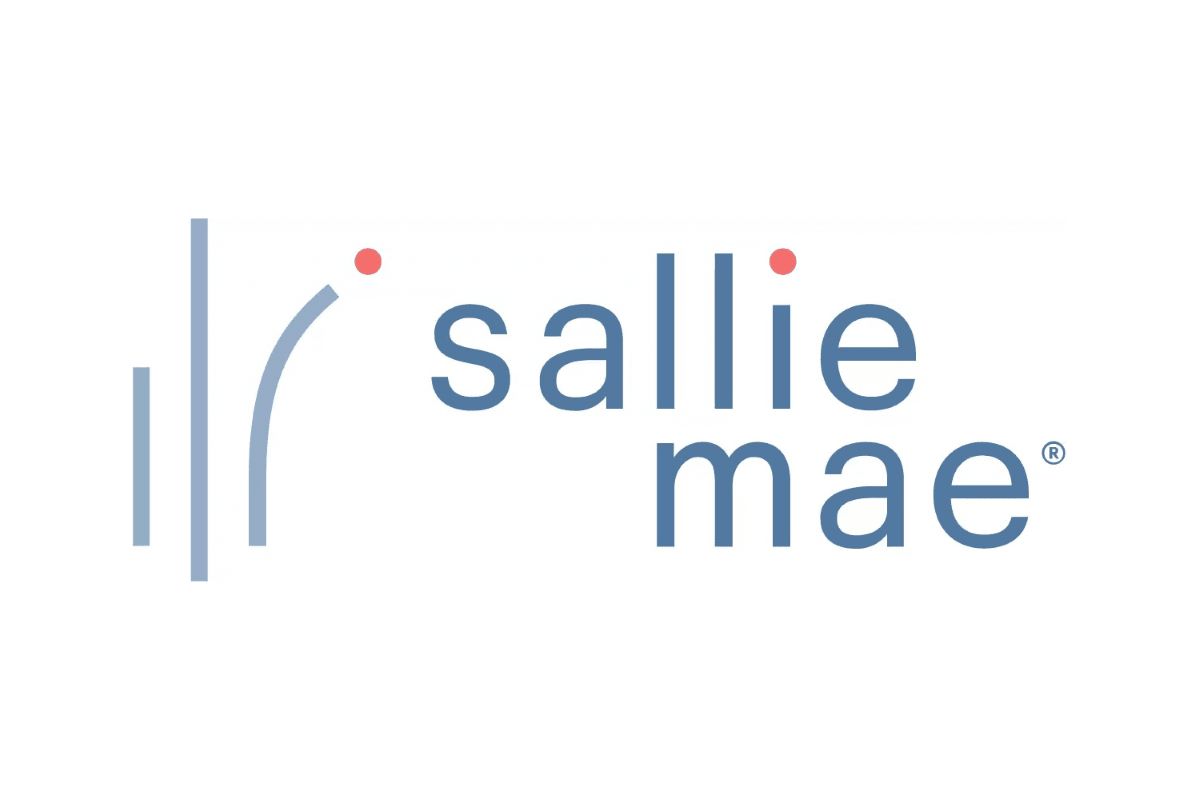

Finance
What Is Basic Employee Life Insurance?
Published: October 16, 2023
Discover the importance of basic employee life insurance and its impact on your finances. Protect your future and loved ones with this essential coverage.
(Many of the links in this article redirect to a specific reviewed product. Your purchase of these products through affiliate links helps to generate commission for LiveWell, at no extra cost. Learn more)
Table of Contents
Introduction
Employee benefits play a crucial role in attracting and retaining talented individuals in the workforce. Among these benefits, basic employee life insurance stands out as a fundamental aspect of a comprehensive compensation package. Basic employee life insurance provides financial protection to employees and their families in the event of the employee’s untimely demise.
Employers recognize the importance of supporting their employees both during their employment and beyond. Basic employee life insurance offers peace of mind to employees, knowing that their loved ones will be financially protected in the aftermath of their passing. This article aims to provide a comprehensive understanding of what basic employee life insurance entails, including its definition, coverage, costs, and other key considerations.
Basic employee life insurance is typically offered as part of an employer’s group benefits package. It often serves as a foundation of financial protection for employees, complemented by other voluntary insurance options such as supplemental life insurance. The coverage provided by basic employee life insurance is a valuable safeguard against unexpected tragedies, ensuring that employees’ families receive a predetermined sum of money, known as the death benefit, in the event of their death.
Understanding the key features and nuances of basic employee life insurance is crucial for both employers and employees. Employers must ensure they are offering the appropriate coverage and benefits to their workforce, while employees need to comprehend the extent of their life insurance coverage. By doing so, both parties can make informed decisions regarding their financial well-being and provide the necessary protection for their loved ones.
Definition of Basic Employee Life Insurance
Basic employee life insurance is a type of group life insurance coverage provided by employers to their employees as part of their benefits package. It is designed to provide financial protection to the employee’s beneficiaries in the event of the employee’s death. This coverage is often offered at no cost to the employee as a valuable perk of their employment.
The terms and conditions of basic employee life insurance vary depending on the employer and the specific policy. Generally, the coverage amount is a multiple of the employee’s annual salary, such as one or two times the salary. However, some employers may have a fixed death benefit amount as part of their standard policy.
The primary purpose of basic employee life insurance is to provide a financial safety net for the employee’s dependents and loved ones. In the unfortunate event of the employee’s untimely demise, the insurance policy pays a lump sum, known as the death benefit, to the designated beneficiaries. This money can be used to cover funeral expenses, outstanding debts, mortgage payments, childcare costs, or any other financial obligations the beneficiaries may have.
It is important to note that basic employee life insurance typically only covers the employee while they are actively employed by the company. If the employee leaves the job or is terminated, the coverage may cease, unless they have the option to convert the coverage to an individual policy or purchase a separate life insurance plan.
Basic employee life insurance is often considered group term life insurance, which means it provides coverage for a specific term, such as one year. The coverage must be renewed annually, and the premium is usually paid by the employer. Additionally, this type of insurance typically does not accumulate cash value over time, as it is primarily intended for protection rather than investment purposes.
Overall, basic employee life insurance offers employees and their families valuable peace of mind, knowing that they have financial protection in place in case of a tragic event. It serves as a basic safety net that helps alleviate the financial burden on the employee’s loved ones during a difficult time.
Coverage and Benefits
Basic employee life insurance provides coverage to employees for a specified amount, generally based on their salary or a flat death benefit. The coverage amount can vary from employer to employer, but it is typically a multiple of the employee’s annual salary, such as one or two times their salary. It is important for employees to review their policy and understand the details of their coverage.
The benefits of basic employee life insurance extend beyond just financial protection. Here are some key aspects of coverage and benefits:
- Death Benefit: In the event of the employee’s death, the insurance policy pays a lump sum, known as the death benefit, to the employee’s designated beneficiaries. This amount can be used by the beneficiaries to cover funeral expenses, outstanding debts, daily living expenses, education costs, or any other financial needs they may have.
- Accelerated Death Benefit: Some basic employee life insurance policies may offer an accelerated death benefit option. This allows terminally ill employees to receive a portion of their death benefit while they are still alive to help with medical expenses or to improve their quality of life.
- Portability: Depending on the specific policy, basic employee life insurance coverage may be portable, allowing employees to continue their coverage if they leave their current job. This can be especially beneficial if the employee has a pre-existing health condition or wants to maintain the same level of coverage without undergoing a medical examination.
- Conversion Option: In some cases, employees may have the option to convert their basic employee life insurance coverage to an individual policy if they leave their job. This allows them to maintain the same level of coverage, albeit at a potentially higher premium, without having to provide evidence of insurability.
- Spousal and Dependent Coverage: While basic employee life insurance primarily focuses on covering the employee, some policies may offer additional coverage options for spouses and dependents. This can provide an added layer of protection for the employee’s family members.
It is important for employees to carefully review their policy to understand the exact coverage and benefits offered by their employer. They should take note of any limitations or exclusions, such as suicide clauses or restrictions on pre-existing conditions, to ensure they have a clear understanding of the policy terms.
Overall, basic employee life insurance offers employees and their families essential financial protection in the event of an employee’s death. It provides a safety net that helps alleviate the financial burden on the employee’s loved ones during an already challenging time.
Enrollment and Eligibility
Enrollment in basic employee life insurance typically occurs when an employee joins a company or during a designated open enrollment period. The specific enrollment process and eligibility requirements can vary among employers, but here are some common aspects to consider:
New Hires: When a new employee joins a company, they will generally have the opportunity to enroll in basic employee life insurance along with other benefit options. The employer will provide the necessary paperwork and information to initiate the enrollment process. It is important for new employees to review the policy details and determine the appropriate coverage amount based on their needs and circumstances.
Open Enrollment: In addition to new hires, existing employees are typically given the chance to make changes to their benefit selections during an open enrollment period. This usually occurs once a year and offers employees the opportunity to review and modify their coverage as needed. Open enrollment is also the time to add dependents or increase the coverage amount, if desired.
Eligibility: Eligibility requirements for basic employee life insurance are set by the employer and may vary depending on factors such as employment status, hours worked per week, or length of employment. Employers commonly offer life insurance to full-time employees, while part-time employees may have different eligibility criteria. It is crucial for employees to review their company’s policy or consult with their HR department to determine if they meet the eligibility criteria for coverage.
Evidence of Insurability: In most cases, basic employee life insurance does not require employees to undergo a medical examination or provide extensive medical history information. Unlike individual life insurance policies, basic employee life insurance is typically offered to eligible employees without requiring evidence of insurability.
Automatic Coverage: Some employers automatically provide a certain level of basic employee life insurance coverage to their employees, meaning employees are enrolled by default unless they actively opt-out. In these cases, employees may have the opportunity to increase their coverage amount if desired.
It is important for employees to familiarize themselves with their employer’s enrollment process and eligibility requirements for basic employee life insurance. This includes understanding any deadlines for enrollment or changes to coverage and ensuring that all necessary forms and documentation are submitted accurately and on time.
Employees should also take advantage of any educational resources provided by their employer to help them make informed decisions about their life insurance coverage. This may include attending informational sessions, reading policy documents, or consulting with HR professionals or insurance representatives.
By understanding the enrollment process and meeting the eligibility criteria, employees can ensure they have the necessary basic employee life insurance coverage in place to protect themselves and their loved ones in the event of an unforeseen tragedy.
Cost and Premiums
The cost and premiums for basic employee life insurance can vary based on several factors, including the employee’s age, salary, and the coverage amount offered by the employer. Here are some key considerations regarding the cost and premiums associated with basic employee life insurance:
Employer Contributions: In many cases, employers cover the cost of basic employee life insurance as part of their benefits package. This means that employees do not have to pay additional premiums for this coverage. However, it’s essential for employees to review their benefit package to understand if any cost-sharing arrangements exist or if there are limitations on coverage.
Tax Implications: The premiums for basic employee life insurance paid by employers are generally considered a tax-deductible business expense. However, if the coverage amount exceeds a certain threshold, typically $50,000, the portion of the premium attributable to the excess coverage may be taxable income to the employee. It’s important for employees to consult with a tax professional to understand the specific tax implications related to their basic employee life insurance coverage.
Cost of Additional Coverage: While basic employee life insurance is often provided at no cost to the employee, employers may offer the option to purchase additional coverage through supplemental life insurance. The cost of supplemental coverage is typically based on factors such as age, health, and coverage amount selected by the employee. Employees who wish to increase their life insurance coverage should carefully review the cost and premium requirements associated with supplemental options.
Age and Health Factors: Basic employee life insurance premiums are generally calculated based on group averages rather than individual characteristics such as age or health. This means that premiums are typically more affordable compared to individual life insurance policies, especially for younger and healthier employees. However, it’s important to note that rates can still vary based on the overall demographics and record of claims within the group of employees.
Pooling Risk: Basic employee life insurance operates on the principle of pooling risk. This means that contributions from all employees collectively fund the death benefits provided to the beneficiaries of those who pass away. By spreading the risk among a larger group, the premiums for basic employee life insurance can be kept at a reasonable level for most employees.
Understanding the cost and premiums associated with basic employee life insurance is essential for employees to make informed decisions regarding their financial protection. It is recommended that employees carefully review their policy documents and consult with their HR department or insurance representatives to fully understand the cost structure and any potential tax implications related to their coverage.
By understanding the financial aspects of basic employee life insurance, employees can effectively plan their overall financial well-being and ensure that they have the necessary coverage to protect their loved ones in the event of their untimely passing.
Common Features and Exclusions
Basic employee life insurance policies often have certain features and exclusions that employees should be aware of. Understanding these common features and exclusions is essential to ensure that employees have a clear understanding of their coverage and its limitations. Here are some of the key features and exclusions to consider:
Grace Period: Most basic employee life insurance policies come with a grace period, typically 30 days, during which the coverage remains in effect even if the employee fails to pay the premium on time. This allows employees some flexibility in making premium payments without an immediate termination of coverage.
Conversion Option: Some basic employee life insurance policies may include a conversion option, allowing employees to convert their coverage to an individual policy if they leave the company. This can be beneficial if an employee wants to maintain the same level of coverage outside of their employment.
Exclusions: Basic employee life insurance policies often include certain exclusions, such as suicide within a specified time frame after policy initiation. Other common exclusions may include death resulting from hazardous activities, war, or illegal activities. It is crucial for employees to review their policy documents to understand the specific exclusions and limitations that may apply to their coverage.
Beneficiary Designation: Employees are typically required to designate beneficiaries for their basic employee life insurance coverage. It is important to keep beneficiary designations up to date and review them periodically to ensure they reflect the employee’s current wishes. Changes in marital status, the birth of children, or the passing of a loved one may necessitate an update in beneficiary designations.
Accelerated Death Benefit: While this feature was briefly mentioned earlier, it is worth highlighting again. Some basic employee life insurance policies may offer an accelerated death benefit option, which allows terminally ill employees to receive a portion of their death benefit for medical expenses or to improve their quality of life while they are still alive.
Policy Terms: Basic employee life insurance policies are typically term policies, meaning they provide coverage for a specific period, such as one year. It’s important for employees to be aware of the policy terms, including renewal dates, premium adjustments, and any changes in coverage that may occur over time.
Employees should thoroughly review their policy documents and consult with their HR department or insurance representatives to understand the specific features and exclusions of their basic employee life insurance coverage. By doing so, employees can ensure that they have a comprehensive understanding of their coverage and can make informed decisions regarding their financial protection.
It is also advised that employees regularly review their policy and make updates as necessary. Life circumstances change, and staying informed about the features and exclusions of their basic employee life insurance coverage will ensure that employees have the appropriate protection in place in the face of unforeseen events.
Comparison with Supplemental Life Insurance
While basic employee life insurance provides a foundational level of coverage, some employees may choose to enhance their life insurance protection by opting for supplemental life insurance. Understanding the key differences between basic employee life insurance and supplemental life insurance can help employees make informed decisions about their coverage needs. Here are some points of comparison:
Coverage Amount: Basic employee life insurance typically offers coverage based on a multiple of the employee’s salary or a fixed death benefit amount. In contrast, supplemental life insurance allows employees to increase their coverage beyond the basic level. Employees can select the desired coverage amount, subject to certain limits set by the insurer.
Premium Costs: Basic employee life insurance is often provided by the employer at little to no cost to the employee. However, if an employee chooses supplemental life insurance, they will be responsible for paying the premiums. The cost of supplemental coverage depends on factors such as the employee’s age, health, and the coverage amount selected.
Eligibility: Basic employee life insurance is typically offered to all eligible employees, regardless of their health status. Supplemental life insurance, on the other hand, may require employees to provide evidence of insurability, such as completing a health questionnaire or undergoing a medical exam. Employees with pre-existing medical conditions may face higher premiums or be ineligible for supplemental coverage.
Portability: While basic employee life insurance is often tied to employment, supplemental life insurance may be portable, meaning employees can continue the coverage even if they change jobs or leave their current employer. This allows employees to maintain the same level of coverage without the need to reapply or provide evidence of insurability.
Beneficiaries and Payout: Both basic employee life insurance and supplemental life insurance allow employees to designate beneficiaries who will receive the death benefit in the event of their passing. The payout for both types of coverage is typically a tax-free lump sum payment to the beneficiaries.
Flexibility and Customization: Supplemental life insurance provides employees with greater flexibility to customize their coverage based on their specific needs. Employees can choose the coverage amount and duration that aligns with their financial goals, allowing them to tailor their life insurance protection to their individual circumstances.
Employees should carefully evaluate their personal and financial situation to determine whether the coverage offered by basic employee life insurance is sufficient or if additional protection is needed through supplemental life insurance. By considering factors such as budget, coverage needs, and future plans, employees can make an informed decision about the type and amount of life insurance coverage that best meets their needs.
It’s important to note that both basic employee life insurance and supplemental life insurance provide valuable financial protection to employees and their beneficiaries. Whether employees choose to rely solely on the basic coverage or opt for additional supplemental coverage, having some form of life insurance can offer peace of mind and financial security in the face of life’s uncertainties.
Advantages and Disadvantages
Basic employee life insurance offers several advantages and disadvantages for both employers and employees. By understanding these benefits and limitations, individuals can make informed decisions about their coverage. Here are the key advantages and disadvantages to consider:
Advantages for Employees:
- Financial Protection: Basic employee life insurance provides a financial safety net for employees, ensuring that their loved ones are supported in the event of their untimely passing. It can help cover funeral expenses, outstanding debts, and provide ongoing financial support for dependents.
- No Cost or Low Cost: Basic employee life insurance is often provided by employers at little to no cost to employees. This provides valuable coverage without the need for employees to allocate a significant portion of their income toward life insurance premiums.
- Convenience: Enrollment in basic employee life insurance is typically straightforward and easy, as employees are automatically enrolled or can easily enroll during specified periods. The coverage is often maintained as long as the employee remains with the company, providing uninterrupted protection.
- Group Rates: Basic employee life insurance is designed to take advantage of group rates, making it more affordable than individual policies. This can be especially beneficial for employees who may have difficulty securing affordable coverage on their own due to factors such as age or health conditions.
Disadvantages for Employees:
- Limited Coverage: Basic employee life insurance coverage amounts may be insufficient for some employees who have significant financial responsibilities or dependents with specific needs. The coverage provided by basic employee life insurance may not be adequate to fully address their financial concerns.
- Dependence on Employment: Basic employee life insurance is typically tied to employment. If an employee leaves their job, they may lose the coverage provided by the employer. While some policies may offer portability or conversion options, employees may need to secure alternative coverage, often at a higher cost.
- Limited Customization: Basic employee life insurance policies are generally standard and offer limited customization options. Employees may not have the flexibility to tailor the coverage to their unique needs or financial goals.
Advantages for Employers:
- Employee Attraction and Retention: Offering basic employee life insurance as part of a comprehensive benefits package can be a valuable tool for employers to attract and retain talented employees. It enhances the overall compensation package and demonstrates the employer’s commitment to employee well-being.
- Tax Benefits: Employers can often deduct the cost of providing basic employee life insurance coverage as a business expense, which can result in potential tax savings.
- Employee Morale and Peace of Mind: Providing basic employee life insurance shows employees that their employer cares about their financial security and the well-being of their families. This can lead to increased employee satisfaction, morale, and peace of mind.
Disadvantages for Employers:
- Costs for Employer: While the cost of basic employee life insurance may be relatively low compared to other benefits, it still represents an expense for the employer. This financial burden may need to be managed alongside other benefit offerings and business costs.
- Administrative Responsibilities: Offering basic employee life insurance involves administrative tasks, such as enrollment processes, record-keeping, and premium payment management. Employers need to allocate resources to ensure smooth administration of the insurance program.
It is essential for both employees and employers to consider the advantages and disadvantages of basic employee life insurance. Employees should evaluate their coverage needs and consider supplementing their basic coverage with additional options if necessary. Employers should carefully assess the cost and administrative duties associated with providing basic employee life insurance, weighing it against the benefits it offers in attracting and retaining employees.
Ultimately, basic employee life insurance serves as a valuable form of financial protection, providing employees and their families with peace of mind in knowing that their loved ones will be taken care of in the event of their death.
Considerations for Employers
Offering basic employee life insurance as part of a comprehensive benefits package can provide several advantages for employers. However, there are important considerations to keep in mind when implementing and managing a basic employee life insurance program. Here are some key factors for employers to consider:
Budget: Employers need to carefully evaluate the financial implications of offering basic employee life insurance. This includes understanding the premium costs, any cost-sharing arrangements, and the overall impact on the company’s budget. Balancing the costs of providing coverage with other benefit offerings and business expenses is crucial.
Employee Needs and Demographics: Employers should assess the specific needs and demographics of their workforce when determining the appropriate level of basic employee life insurance coverage. Factors such as age, marital status, and dependents can greatly influence the coverage requirements of employees. Employers may consider offering options for additional coverage to cater to the specific needs and preferences of their employees.
Carrier Selection: It is essential for employers to carefully evaluate insurance carriers when selecting a basic employee life insurance policy. Factors to consider include the carrier’s financial stability, reputation, customer service record, and ability to provide the desired coverage options and services. Working with a reputable and reliable insurance carrier is crucial to ensure quality coverage and a smooth claims process.
Communication and Education: Employers should prioritize effective communication and education about the basic employee life insurance program. Providing clear and comprehensive information to employees about the coverage details, enrollment process, beneficiaries, and any limitations is essential. Employers may consider conducting regular educational sessions or providing written materials to ensure employees have a thorough understanding of the benefit and its value.
Administration and Compliance: Proper administration and compliance are necessary for the smooth management of a basic employee life insurance program. Employers should ensure they have a streamlined process in place for enrolling eligible employees, maintaining accurate records, handling premium payments, and communicating with the insurance carrier. Compliance with relevant laws and regulations, such as those related to privacy and taxation, is also important to avoid legal issues.
Employee Assistance Programs: Offering additional support and resources alongside basic employee life insurance can further enhance the overall well-being of employees. Employee assistance programs (EAPs) providing counseling, financial planning services, and grief support can complement basic employee life insurance and offer a holistic approach to employee support during difficult times.
Regular Review and Evaluation: Employers should periodically review and evaluate their basic employee life insurance program to ensure it continues to meet the needs of their workforce. This includes assessing the adequacy of the coverage amount, considering feedback from employees, and staying updated on market trends and changes in insurance offerings.
By considering these key considerations for employers, organizations can design and administer a basic employee life insurance program that aligns with the needs and expectations of their workforce. This demonstrates a commitment to employee well-being and can significantly contribute to employee satisfaction, retention, and overall engagement.
Conclusion
Basic employee life insurance plays a vital role in providing financial security and peace of mind for both employees and their families. It serves as a foundational level of coverage that employers can offer as part of a comprehensive benefits package. Understanding the features, coverage, and limitations of basic employee life insurance is crucial for employees to make informed decisions about their financial protection.
While basic employee life insurance offers important benefits, such as financial protection at little to no cost, it has limitations. Employees should carefully evaluate their coverage needs and consider supplementing their basic coverage with additional options, such as supplemental life insurance, if needed. Employers, on the other hand, should consider the budgetary implications, employee demographics, carrier selection, communication strategies, and compliance requirements when implementing and managing a basic employee life insurance program.
By striking the right balance between providing appropriate coverage and considering the financial implications, employers can attract and retain talented employees while demonstrating their commitment to employee well-being. Effective communication and education about the basic employee life insurance program are essential to ensure that employees understand their coverage and can make informed decisions.
Ultimately, basic employee life insurance offers valuable financial protection during a time of great need. It serves as a crucial safety net, providing employees and their loved ones with the necessary resources to cope with the financial challenges that may arise in the event of an employee’s untimely passing.
Employees should take advantage of the basic employee life insurance offerings provided by their employers. It is recommended that they review their coverage, designate beneficiaries, and keep policy information updated to align with their current circumstances. Employers should regularly evaluate and adjust their basic employee life insurance program to meet the evolving needs of their workforce.
By prioritizing the well-being and financial security of employees through the provision of basic employee life insurance, employers can enhance employee satisfaction, loyalty, and overall organizational success. Basic employee life insurance is a critical component of a comprehensive benefits package, offering the peace of mind that comes with knowing loved ones will be cared for during a challenging time.














